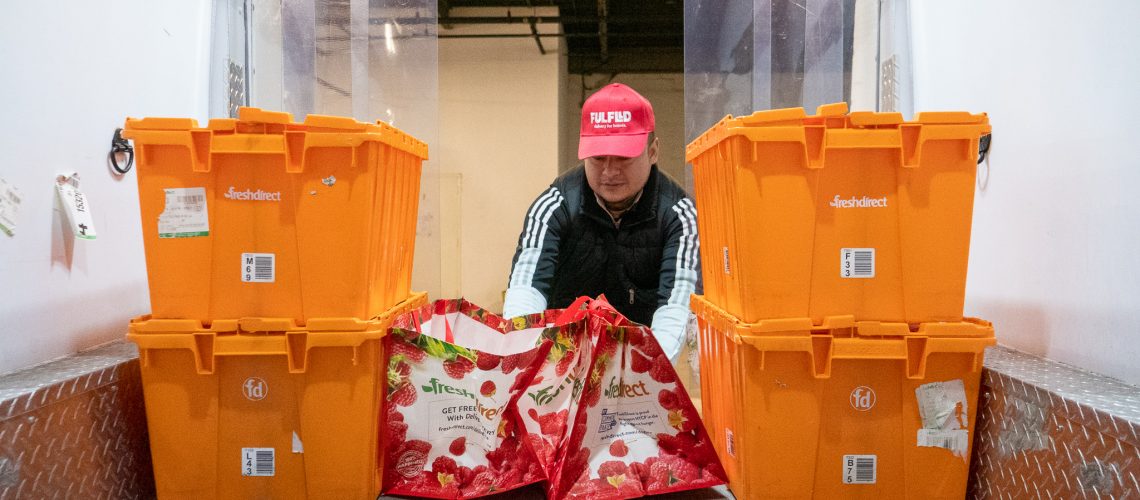Last mile delivery is the final trip a product makes from the company to your house. This may involve a trip from the company itself, a warehouse, a local store, or another location. Essentially, the product is ready and just has to be delivered to your house.
Common challenges associated with last mile delivery include process inefficiencies, high costs, inconsistency in brand image, and tracking visibility. On their own, any one of these challenges creates complications during last mile delivery; together, they create one of the most difficult processes in the supply chain.
Keep reading to learn more about last mile delivery and the common challenges associated with this vital service, in addition to how you can solve these issues.
Challenges Of Last Mile Delivery
As consumers grow more accustomed to fast shipping processes, especially two-day and same-day shipping, the challenges associated with last mile delivery have been compounded. Getting packages and other products to customers quickly and in a cost-effective manner is harder than ever before.
Inefficiency
One of the greatest obstacles with last mile delivery is that it’s inefficient. In most cases, it involves multiple stops for low volume deliveries (i.e., one or two packages).
In rural areas, there’s greater distances between each stop. But in urban areas, drivers must contend with traffic congestion. These geographic delays mean that delivery routes are slow-going, no matter where the final destinations are.
Since package volume and delivery time are the two primary components of this challenge, there’s a direct relationship between the two. As you try to compress delivery time, such as with same-day delivery, more inefficiencies are caused. Similarly, high volume delivery times, such as during Christmas or other holidays, creates more delays.
Depending on the fuel efficiency of the delivery vehicle used, regular refueling stops may also add time onto routes and further delay deliveries.
High Costs
Last mile delivery is responsible for more than half of overall shipping costs. While this is already a substantial financial burden for many businesses, the rise of free shipping has further increased costs. As customers become less willing to pay shipping fees, businesses must choose between footing the bill themselves or risk consumers shopping elsewhere.
This is due to what’s called the Amazon Effect, which describes the market disruption Amazon caused for traditional retailers. By offering free two-day (and now same-day) shipping, other businesses are forced to do the same in order to remain competitive.
As companies grow and have more deliveries to make, they’re faced with rising costs associated with either retaining their own fleet of vehicles and drivers or outsourcing to another company.
Brand Image
For some companies, last mile delivery drivers simply have to drop off packages and, if necessary, provide minimal customer service. But for other companies, last mile delivery drivers must function as an extension of their brand image. This means that the drivers need to dress and act in professional manner.
Here’s an example: You’ve ordered decorations and bakery items for a corporate party from ABC Décor. But the delivery driver is late and doesn’t get there until guests have started arriving. The driver is not only dressed poorly, but is also rude to you and several guests.
You’d probably never order from ABC Décor again, even though your problem was with the delivery service and not the company itself; that’s because last mile delivery services are viewed as part of the company they work for.
Finding a last mile delivery service that is able to uphold your corporate image and culture can be difficult, especially if there’s an increased chance of interaction between customers and drivers. Though a popular option for last mile delivery is location-based crowdsourcing, such as through Uber or Postmates, companies have little control over the delivery experience.
Tracking Visibility
Customers don’t just want to know when their package will arrive; they also want to know where it is at any given time. The same goes for companies; they want to know where their drivers are and if deliveries are on schedule.
But besides adding more costs, real-time location tracking can be difficult to find, integrate, and use. Companies must first find a software or system that is compatible with their current needs and scalable for future growth. Then, they must find a way to integrate it into their existing processes and technology, which may be difficult if it involves a transition from legacy systems. Finally, they must train their workforce or outsourced drivers on how to effectively use it.
Such a system also entails customer service support, in case deliveries are delayed, lost, or damaged.



